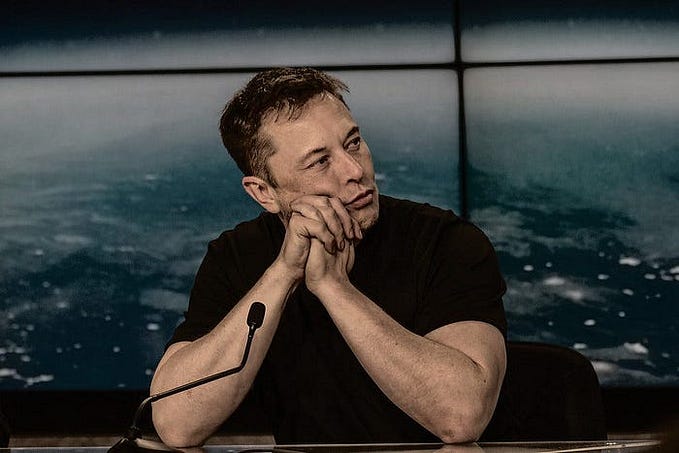How Will We Save Ourselves?
An Essay on Racism and Accountability in the
Nuclear Policy Field

Note: This essay was originally circulated among an open letter (Google docs) within the nuclear policy expert community in July 2020
Many centuries ago, people believed that the apparition of a comet — a burning star hurtling across the sky — meant that a catastrophic event was about to descend on humankind. Myths around the world connected comets to famines, plagues, and wars. After hundreds of years living and surviving, people gradually let go of the idea that celestial bodies deliver illness and misfortune. But one aspect of the human condition withstands the test of time: the inability to take responsibility for the crises that we bring to this planet and our lives.
***
The crises in 2020 are visceral, brutal, manifold. COVID-19 continues to burden healthcare systems and kill thousands around the world, including more than 130,000 in the United States. The murders of George Floyd, Breonna Taylor, Ahmaud Arbery, Elijah Mcclain, and many more black Americans re-ignited a deep rage against police brutality and white supremacy. COVID-19 is dubbed “novel,” and racism is a demon as old as time, but they are twin calamities that stoke each other’s flames. Black, indigenous, and people of color in the United States continue to have the highest COVID-19 infection rates because their opportunities are more likely to be limited to low-wage jobs (ironically dubbed as “essential” work). Several months into the pandemic, and several weeks into the latest Black Lives Matter uprisings, people are reckoning with the fact that existing power structures, governing bodies, and normalized prejudices are central instigators of these modern-day catastrophes.
So for the first time in history, many Americans are trying to see racism within themselves and understand how it manifests in subtle and sinister ways. As such, I’ve been following my work community’s reaction to the nationwide protests, and how they plan to answer the clarion call against racism. It’s an interesting experience considering that my work involves the analysis and prevention of a singular catastrophe, one of the worst in history, and invented by human hands: nuclear war. The bombings of Hiroshima and Nagasaki in 1945 are disturbing and shameful demonstrations of American political and military power. Despite U.S. President Eisenhower’s 1953 Atoms for Peace speech proposing to steer the “miraculous inventiveness” of man towards peace instead of death, nuclear weapons continued to spread — nearly 14,000 worldwide today — and now controlled in nine countries. Thus, the nuclear policy field has made “saving” and “securing” lives core values of its work.
Organizations within the nuclear policy and international security disciplines condemned structural racism in the workplace, and encouraged a dialogue on how injustices at home reverberate overseas. I believe this to be an important and sincere gesture of solidarity. But practicing solidarity demands deep introspection that goes beyond organizational accountability. At the individual level, it can be uncomfortable, painful and profound. Avoiding nuclear war requires international stability and security, so it may be unnerving for experts in the field, especially those whose scholarship have been shaped by American culture and policy, to confront the incongruity and impossibility of achieving “stability” and “security” for all people when the field has historically denied these values to black and brown communities.
White supremacy is imprinted in U.S. nuclear history. Nuclear weapons are made from the agendas of majority white scientists and policymakers, and the exploitation of indigenous, black, and brown bodies. The uranium used in the first nuclear bombs were taken from Shinkolobwe located in Democratic Republic of Congo (formerly the Belgian Congo), with many miners unprotected from radioactive debris and unaware of how their cheap labor would eventually contribute to the attack on Hiroshima and Nagasaki. Vast areas of Diné Bikéyah (now Navajo Nation) were also excavated for uranium and became home to some of the earliest uranium milling sites in the United States. Today, Navajo people suffer abysmal COVID infection rates; and many do not have access to clean water because of contaminated waterways caused by over 500 abandoned uranium mines scattered throughout the land.
The “downwinders” in the American Southwest, as well as natives of the Marshall Islands exposed to radioactive fallout and displaced from their homes have not reached overdue recognition and compensation for the environmental and health problems they suffered after being exposed to nuclear testing (the United States conducted over a thousand nuclear tests until 1992). Doctors contracted under the former U.S. Atomic Energy Commission experimented on unsuspecting Americans — many of whom were black and other minorities — to study the impact of radiation on the body. But these stories stay tucked underneath the romanticized tales about the origins of the Manhattan Project and the biopics of the great scientific minds that “birthed” the bomb. Why is it that most nuclear policy experts recognize July 16th as the anniversary of the “Trinity” nuclear test, but not the largest accidental radiation contamination in the country, the Churchrock uranium spill in Navajoland? As nuclear policy developed into a field of scholarship, the academic pioneers selected certain histories and narratives as the bricks of its foundations. This begs the question: who chose what to remember, what to forget, and what to ignore? As author Kwame Alexander observed, “Books (and by extension stories and ideas) don’t segregate themselves.”
How far will the nuclear field’s introspection go? Deterrence theory, the notion that a country’s demonstrable capacity to retaliate with overwhelming force can prevent an enemy attack, is the leading argument nuclear policy experts use to rationalize continued political and economic investment on nuclear weapons. Following this line of thinking, nuclear weapons present a global threat so unique and unacceptable that no country possessing nuclear weapons would dare attack another, therefore helping achieve international stability. But if one probes this theory through an anti-racist lens, something becomes disturbingly clear. It accedes to a world order where the threat of unimaginable violence holds value over other alternative expressions of peace and diplomacy.
Belief in deterrence accepts a psychologically twisted world in which a bomb — only possessed and proudly displayed by a very select group of countries — is an effective form of global security. This argument shares a common thread with the disproportionate show of force against black and brown communities, and protesters supporting the Black Lives Matter movement: that the discretion to use violence is an act of public service for the common, greater “good.” Nuclear weapons are precarious guardians; its use — to bomb or not to bomb — is determined by the whims of the global leaders who wield it. They are tools of discipline that, as writer Richard Wright proposed in White Man, Listen!, “makes the West feel that it would rather have no world at all than to share it, living and letting live, giving and taking.”
To practice anti-racism in the nuclear policy field is to hold the messy contradictions embedded in the way it chooses to define and implement the values of “security,” “protection,” and “stability.” In his book, African Americans Against the Bomb, Vincent Intondi recalls a meeting between Japanese nuclear bomb survivors (the hibakushas) and the illustrious Malcolm X in 1964. During this fateful gathering in Harlem, Malcolm said, “You have been scarred by the atom bomb…The bomb that hit us [African Americans] is racism.” The parallels still hold today.
These histories and perspectives serve as signposts to accountability, but have been overlooked due to the long-standing assumption that nuclear policy is far above the social justice frame. Or that any outcome that incorporates this frame won’t yield “meaningful”change because it is not considered a credible point of analysis (i.e., counting warheads or examining geopolitical motivations or scrutinizing defense budgets). But the reality is unavoidable: to make nuclear weapons issues relevant and relatable necessitates a dissection of power dynamics that have been taken for granted in the field. This includes who is seen and who is heard. And this exercise will inevitable point to systemic racism that exists in the field.
As it stands, nuclear disarmament is far from becoming a mass movement because all people — especially including black, indigenous, and people of color — do not see themselves leading, let alone being included, in the dialogue. In addition to diversifying the field and cultivating a work culture in which people of color can see themselves in positions of leadership and influence, it is vital to accept nuclear history and policy in its entirety, including the experiences of those who already sacrificed and continue to suffer. Doing so could lead to more effective and conscientious policies that force scholars and policymakers to confront the human cost against the value of the bomb. Under this frame, recent policy recommendations like resuming nuclear explosions would never be viable, and immediately regarded as thoughtless, unethical, and inhumane. A pivotal reframing could also yield innovative and holistic approaches to arms control, and perhaps even move the field closer to a serious dialogue around disarmament. But these possible futures will not materialize until nuclear policy experts acknowledge the ugly truths of the field’s past and present.
***
While contemplating all the crises raging in this world, I am reminded of W.E.B. Du Bois’ “The Comet” (1920), a short story about a black man and a white woman forced to band together and uproot ingrained racist views after a comet crash destroys New York City. As they consider building a new society, their vision is interrupted when they cross paths with other white survivors, and the woman ultimately decides it is in her best interest to join them instead. “The Comet” is a story that sits between the realm of fantasy and reality, pushing readers to think about that razor’s edge separating what is controllable and uncontrollable (is there a choice to break the cycle of racism?), and what is possible and impossible (is it possible to “save” humanity from something existential such as a comet? Or racism?). It serves as a reminder that irrespective of the cataclysmic events that we may encounter in our fragile lives — cosmic incidents, pandemics, police brutality, racism, nuclear war — there is always an option to fight with integrity and accountability. And that choice must be all-encompassing; the work to be anti-racist should turn organizations and individuals inside out.
So the question remains, how will we save ourselves?








